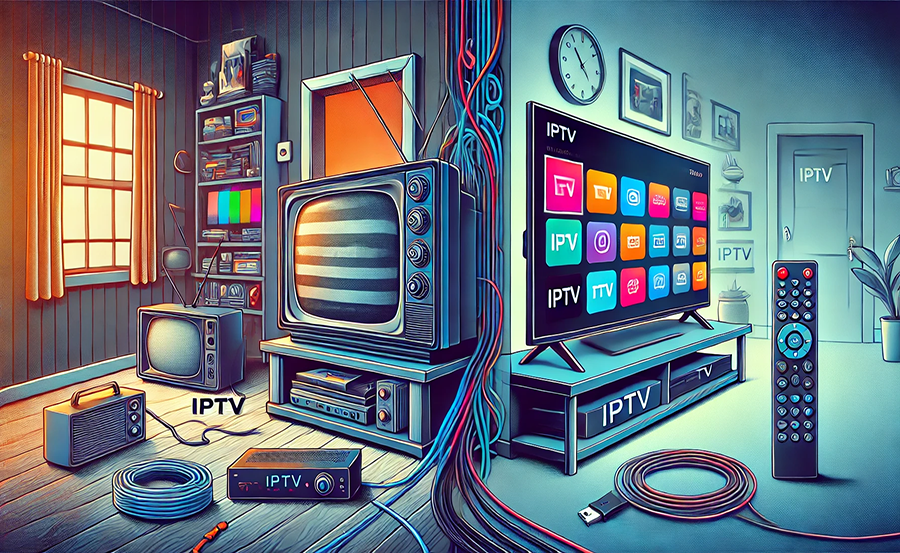As the digital era evolves, we’ve seen a noticeable shift in the way content is consumed. Enter IPTV— the new age of television— where content delivery over internet protocol networks has redefined entertainment. The flexibility and the user-centric nature of IPTV make it an enticing choice for those looking after a personalized viewing experience. In this article, let’s explore how users can customize IPTV playback settings on Linux to enhance their overall experience.
The Basics of IPTV on Linux
In the world of IPTV, the Linux operating system is gradually establishing itself as a robust platform, thanks to its open-source nature and adaptability. Whether you’re searching for affordable IPTV or discovering the best IPTV channels, the customizability of Linux provides options that cater to every need. However, configuring IPTV on Linux may seem daunting at first.
Linux, with its numerous distributions like Ubuntu, Fedora, or Manjaro, offers plenty of IPTV software applications. From VLC Media Player to Kodi and beyond, there’s a wide array of solutions. But configuring these apps for optimal playback settings takes some finesse.
Quick Tip:
Discover premium UK TV channels with IPTV for UK channels and enjoy all your favorites.
Choosing the Right IPTV Player
Selecting an IPTV player is essential, as different applications offer varied features. While some might prioritize user-friendly interfaces, others focus on providing advanced configuration options. VLC Player comes highly recommended for its simplicity and versatility. XBMC, now known as Kodi, is another favorite for those looking to leverage extra plugins and custom setups.
Understanding Stream Protocols
IPTV relies on different stream protocols, such as HTTP, RTMP, and HLS, each impacting playback quality. Understanding these can help you tweak settings for superior IPTV viewing. For instance, HLS is often praised for its adaptability across bandwidth variations, ensuring a smooth viewing experience.
Setting Up IPTV Playback on Linux
Setting up IPTV on Linux involves a series of steps, which can vary slightly depending on the chose IPTV player. Here’s a general guide to steer you through this process:
Installing an IPTV Client
To begin with, installing an appropriate IPTV client is crucial. Linux users have countless options, from command-line driven tools to GUI-based applications.
- Install VLC with sudo apt-get install vlc for Ubuntu users.
- Choose software centers for GUI-based installations of Kodi.
- For those on Fedora, dnf install vlc is the command of choice.
Configuring Your IPTV Service
Once your chosen player is installed, configuration follows. Loading your IPTV subscription might involve inserting a provided M3U playlist link or setting up specific PVR add-ons in Kodi. Detailed guides from service providers are often helpful here.
Customizing Playback Settings for Optimal Experience
Now enters the art of perfecting your IPTV usage. Customization isn’t just about personal preferences but also about minimizing issues like buffering or lag.
Adjusting Video and Audio Settings
Your selected player will typically offer configuration settings for video codecs, resolutions, and sound enhancements. Feel free to tweak these in your player settings window. You might find:
- Video scaling and deinterlacing options in VLC.
- Sound equalizers in advanced audio settings for Kodi.
- Codec packs that can be manually upgraded or altered.
Network Optimization
Network performance directly affects IPTV streams. Adjust settings to prioritize bandwidth allocation via system settings on Linux. This helps mitigate buffering errors. Determine if your network can handle multiple streams or if adjustments to router settings can enhance IPTV playback quality.
Troubleshooting Common Issues
Challenges with IPTV on Linux aren’t uncommon, but they’re certainly manageable. Here’s how to overcome typical hurdles:
Buffering Problems
Buffering is perhaps the most exasperating problem when enjoying IPTV. Decrease playback resolution to match your data speeds, and consider selecting a less congested network channel. Limiting additional devices’ network usage also helps.
Subscription Errors
Sometimes, the core of playback issues is subscription-related. Ensure your IPTV service is active and compatible with the client software installed on your Linux OS. Often deletions and re-additions of IPTV sources can clear errors.
Enhancing Experience with Add-ons and Plugins
Why settle for a standard experience when add-ons can enrich your IPTV? These extensions, including EPG guides or enhanced subtitle managers, are phenomenal enhancements for Linux users already embracing the power of open-source.
Popular Plugins
Some notable IPTV plugins can significantly enhance your viewing adventures:
- PVR IPTV Simple Client add-on for Kodi.
- Subtitle plugins helping overcome language barriers.
- Weather and glance screen info extensions.
Security Plugins
Network protection is increasingly vital. Leverage plugins to fortify your operational security:
- VPN clients integrated into IPTV users’ setups.
- Firewall modules compatible with dedicated IPTV clients.
Final Thoughts
Configuring and customizing IPTV playback settings on Linux might initially seem an intricate task, but it’s more rewarding than you might expect. Embracing the flexibility and power of the Linux operating system can transform your TV viewing into something personalized and enjoyable. Don’t shy away from experimenting with the settings to find what suits your viewing habits best. As user needs evolve, so too will the tools and features available, making IPTV on Linux both a dynamic and attractive choice.
FAQ

How do I choose the best IPTV service for my needs?
Your choice should hinge on a few factors: the quality and range of channels, streaming reliability, and customer service. Compare different subscriptions and read reviews tailored to your preferences.
Can I use IPTV on Linux without technical expertise?
Certainly, though a foundation in Linux basics will smoothen the process. Many player applications are intuitive, but a minimal understanding can help troubleshoot common issues.
Are there free IPTV services available for Linux users?
Some services offer free trials, but be wary of fully free services as they might not provide the reliability and legality you’re looking for.
Is Linux the best OS for IPTV?
While it’s subjective, Linux’s open-source ecosystem offers great flexibility, making it an attractive choice for tech-savvy users who wish to customize their experience extensively.
How secure is using IPTV on Linux?
With proper security measures, like updated software and VPNs, Linux can be a secure platform for IPTV. Always choose reputable IPTV services to further minimize risks.
Exploring Network Bandwidth’s Role in IPTV Lag





